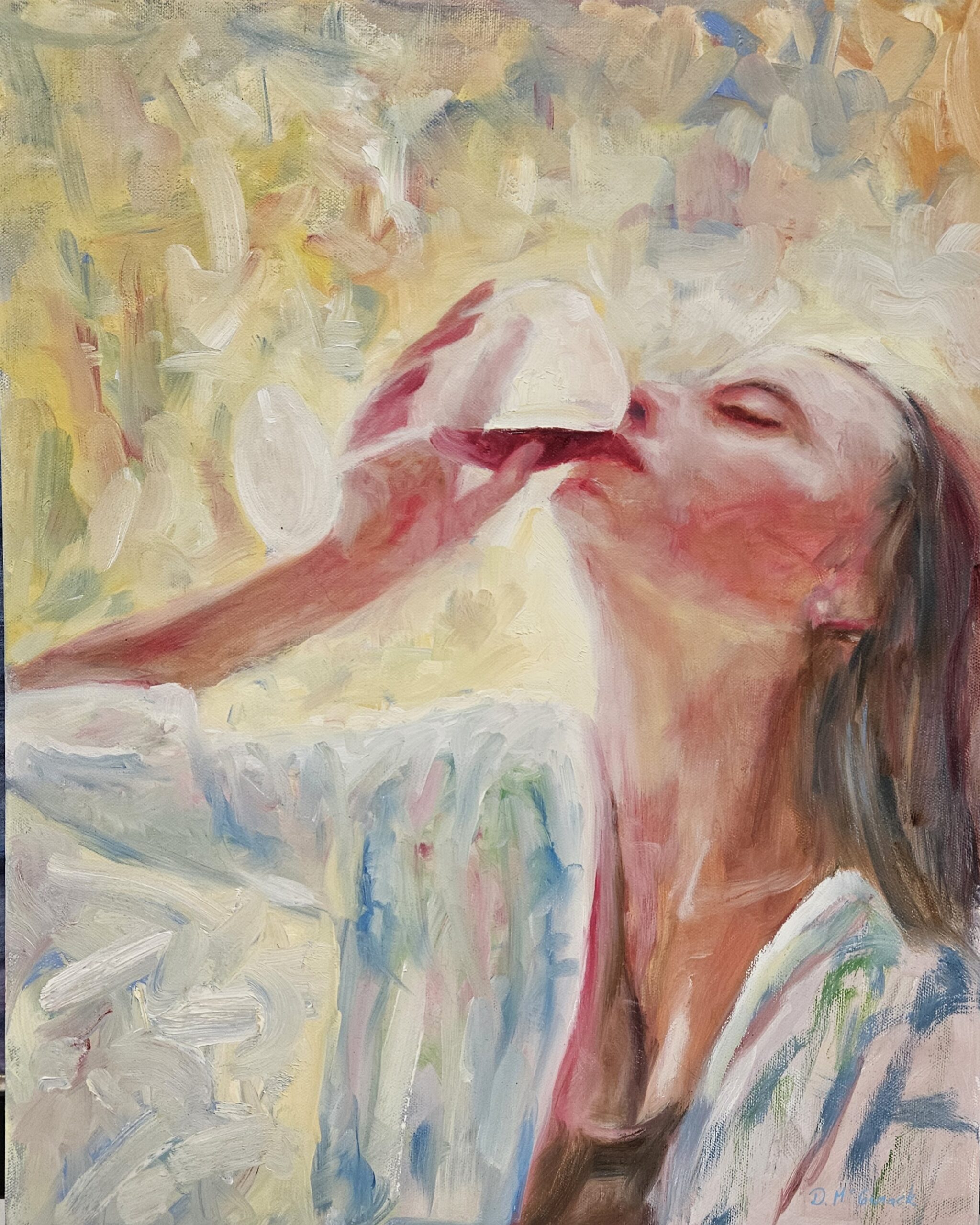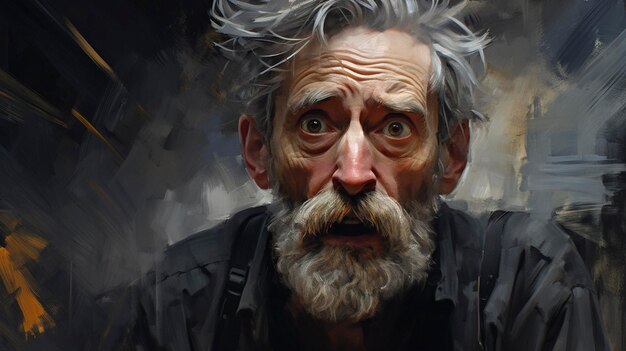Figurative Oil Painting: From Concept to Canvas - A Step-by-Step Approach
Wiki Article
The Development of Metaphorical Oil Paint: Recognizing Its Historic Importance and Modern Interpretations
The advancement of metaphorical oil paint works as an engaging lens via which to check out the interaction between creative expression and historic context. From the meticulous naturalism of the Renaissance to the stirring power of the Baroque, each period has contributed layers of definition and strategy to this ageless tool. Contemporary musicians, attracting from this abundant heritage, are now reinterpreting the human figure in manner ins which challenge standard narratives. As we explore these transformations, one need to consider exactly how the dialogue between present and previous informs not only artistic technique but likewise social representations in a progressively intricate globe.Origins of Metaphorical Oil Painting
The beginnings of metaphorical oil paint can be traced back to the very early Renaissance in Europe, specifically in the 15th century. This duration marked a substantial separation from the inflexible types and level depictions particular of medieval art. Musicians started to check out naturalism, emphasizing the human figure and its psychological expression. The growth of oil paint permitted better depth of color and detail, improving the realism and vibrancy of their work.
In this transformative age, numbers were frequently portrayed within contextually abundant environments, showcasing not just their physical qualities however also their emotional states. Pioneers such as Jan van Eyck and Titian utilized the tool's adaptability, utilizing layering strategies to attain brightness and appearance. This development facilitated the representation of intricate fabrics and the nuances of skin tones, contributing to the development of portraiture and narrative scenes.
Furthermore, the Renaissance focus on humanism fostered an appreciation for individuality, which consequently affected artists to produce more dynamic and relatable figures - figurative oil painting. Because of this, figurative oil paint emerged as an effective vehicle for narration and psychological interaction, preparing for future creative activities and styles
Trick Historical Activities
Considerable historic motions have shaped the development of figurative oil paint, each contributing special approaches and methods that increased the medium's possibilities. The Renaissance noted a turning point, highlighting realistic look and the human kind, with artists like Leonardo da Vinci and Michelangelo pressing the boundaries of anatomical precision and viewpoint. Following this, the Baroque era brought dramatic contrasts of light and shadow, exhibited by Caravaggio, who instilled spiritual styles with intense emotionality.The 19th century introduced Romanticism and Realistic look, where musicians such as Delacroix and Courbet tested timeless perfects, focusing on specific expression and daily life. The advent of Impressionism better changed the medium by highlighting the impacts of light and color, resulting in a departure from standard representation.
In the early 20th century, movements like Expressionism and Cubism redefined metaphorical paint via abstraction and the exploration of psychological depth. Each of these motions not just mirrored the social changes of their times but also prepared for modern interpretations. The interplay between these historical movements has produced a rich tapestry of styles and philosophies, influencing contemporary artists in their pursuit of capturing the human experience on canvas.
Techniques and Products Evolution

Throughout the Baroque duration, techniques such as chiaroscuro and sfumato arised, boosting the psychological vibration of metaphorical compositions. Artists started to explore glazes and impasto, controling appearance and luminance. By the 19th century, innovations like the use of pre-mixed paints in special info tubes transformed availability, permitting musicians to repaint en plein air and record the short lived impacts of light.
The 20th century witnessed the intro of artificial pigments and mediums, which expanded the combination and altered the uniformity of oil paints. In addition, the expedition of brand-new application methods, such as scheme knives and brushes of differing rigidity, further varied artistic expression. Jointly, these innovations mirror Resources the evolving relationship between materials, strategies, and the creative vision fundamental in figurative oil painting.

Contemporary Analyses
Contemporary interpretations of figurative oil paint show a vibrant discussion between practice and development, where musicians test developed norms and check out diverse styles. This evolution materializes in numerous means, as contemporary artists mix classical strategies with modern-day ideas, frequently resolving social, political, and personal narratives.Numerous professionals attract ideas from historic works, yet they infuse their pieces with modern point of views, using the human kind as a car for discourse on culture, gender, and identification. Artists significantly try out abstraction, distortion, and combined media, which enables a wider analysis of the figure and its context.
In addition, using dazzling color schemes and unconventional try this web-site compositions typically serves to interfere with typical watching experiences, provoking critical engagement from target markets. This change in focus extends beyond aesthetics; it reflects an expanding recognition of the complexities of human experience in an interconnected world.
As figurative oil paint remains to advance, it stays an essential medium for discovering the nuances of contemporary life, embodying both a regard for heritage and a commitment to dynamic thought. The result is a rich tapestry of expression that reverberates with the complexities of the modern human condition.
Effect on Modern Art
The impact of metaphorical oil paint on modern art is extensive, as it has continuously inspired a myriad of artistic activities and techniques throughout the 20th and 21st centuries. From Expressionism to Surrealism and past, the exploration of the human figure has remained a main motif, allowing musicians to share complicated feelings and narratives. This focus on metaphorical depiction has actually brought about a re-examination of standard strategies, leading to cutting-edge techniques that mix realistic look with abstraction.
Furthermore, contemporary musicians have actually embraced metaphorical oil painting as a means to address social and political concerns, utilizing the medium to test understandings of culture, gender, and identity. The resurgence of interest in metaphorical work in recent years reflects a wishing for connection in a progressively electronic world, where human experience and emotion are vital.
Furthermore, the dialogue between figurative oil paint and modern art is obvious in the jobs of artists such as Kehinde Wiley and Jenny Saville, that attract on historical recommendations while infusing their pieces with contemporary significance. Inevitably, figurative oil paint remains to form and redefine modern imaginative expression, emphasizing its enduring importance in the art world.
Final Thought
The advancement of figurative oil painting underscores its historical importance and versatility throughout different imaginative motions. From the naturalism of the Renaissance to the stirring expressions of the Baroque and the innovative methods of modernity, this medium has constantly transformed. Contemporary interpretations reflect dynamic shades and unique compositions, promoting vital interaction with social and political motifs. Inevitably, figurative oil paint remains a vital medium for discovering the human experience, resonating profoundly in today's electronic landscape.The advancement of figurative oil paint serves as an engaging lens through which to take a look at the interplay in between creative expression and historical context.Substantial historic activities have formed the evolution of figurative oil painting, each adding one-of-a-kind ideologies and methods that broadened the medium's opportunities.As historical motions formed the trajectory of metaphorical oil painting, the materials and methods used by musicians have actually also undertaken considerable transformations. figurative oil painting.The impact of metaphorical oil paint on modern-day art is profound, as it has consistently inspired a myriad of creative movements and practices throughout the 21st and 20th centuries.The evolution of metaphorical oil painting underscores its historical significance and adaptability throughout various creative motions
Report this wiki page